Asphalt is one of the most common types of paving material available today. The majority of parking lots are built with asphalt, which is found in many other paving applications as well. What many people don’t realize, however, is that using asphalt has many downsides. The biggest one is probably the sheer variety of damage it can create over its lifetime.
Types of Pavement Deterioration
In case you were unaware of the vulnerability and fragility of asphalt, here are the main types of damage it tends to make and the variety of ways it tends to deteriorate over time.
1. Potholes
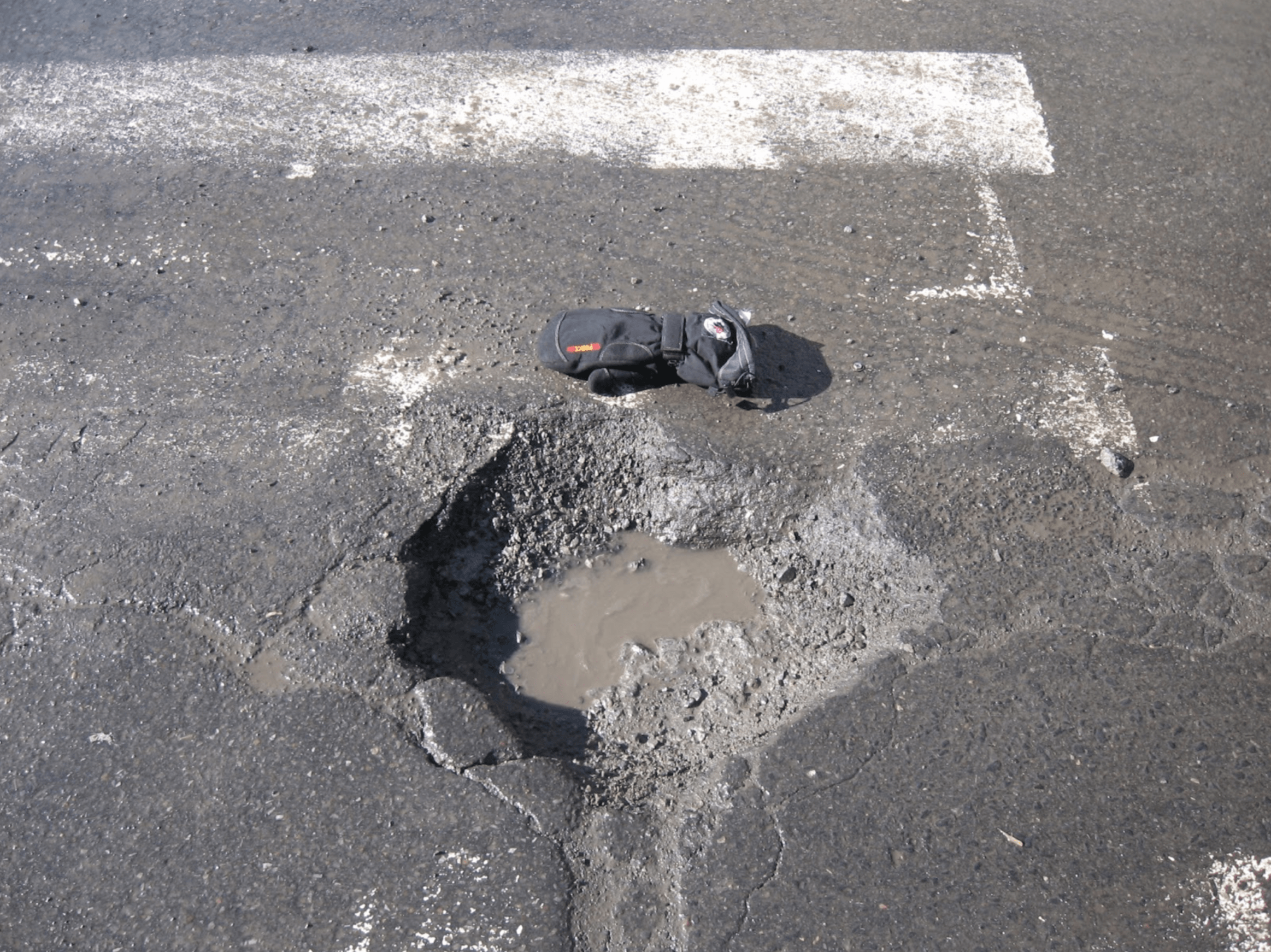
Potholes, one of the most well-known types of asphalt damage, occur when the area beneath the surface of the asphalt has been compromised, not repaired, and completely failed. This eventually leads to a depression in the pavement, known as a pothole. Potholes are dangerous and can lead to injuries as well as vehicle damage.
2. Fatigue Cracks
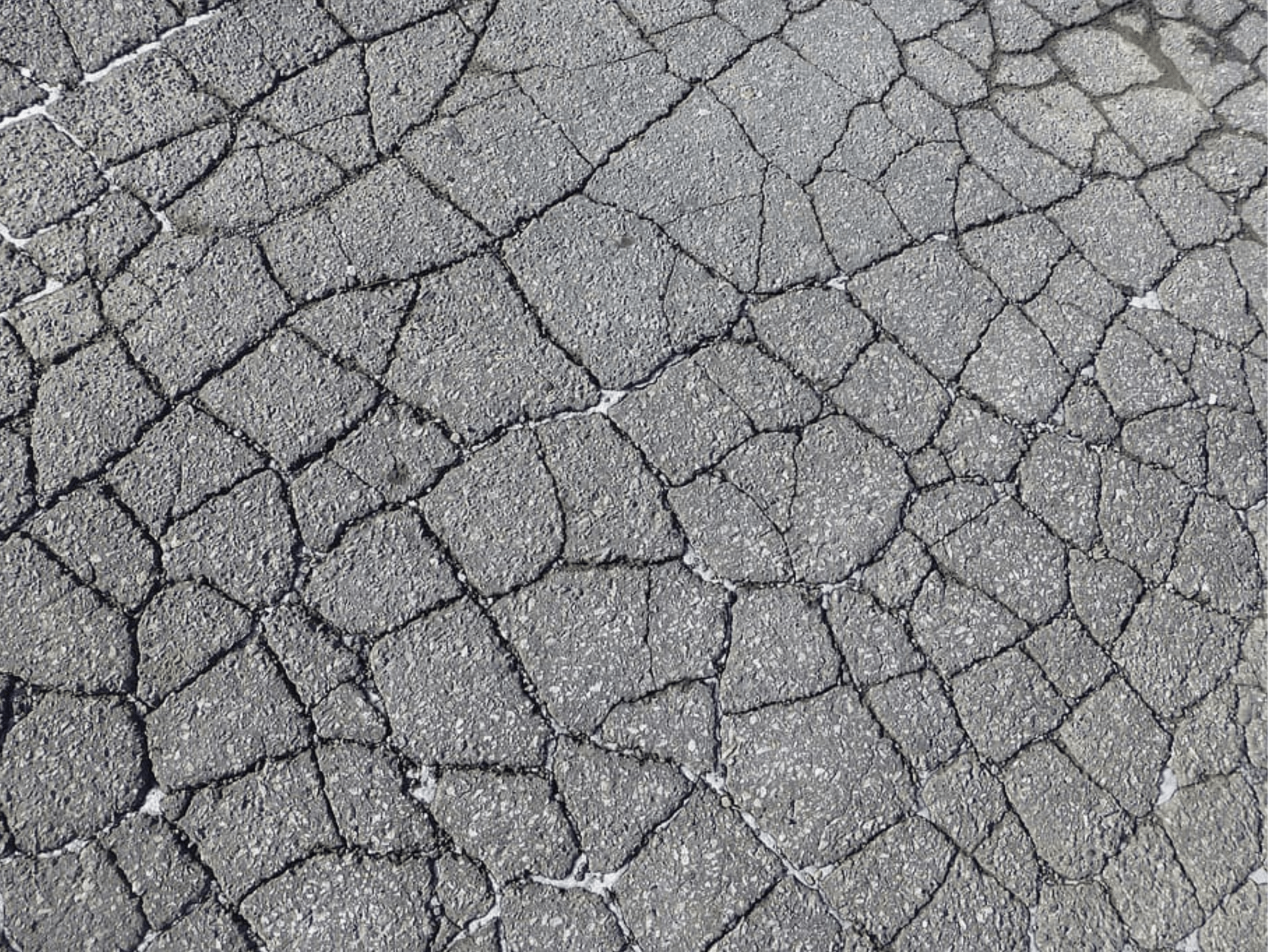
Another common type of asphalt damage, which can occur even more frequently than potholes, is fatigue cracking. These cracks often appear in a pattern similar to shattered glass or a spiderweb. They can occur either from water damage or an improperly installed subsurface.
Traffic and repeated heavy loads on the surface are then improperly distributed, resulting in cracking due to an improper weight distribution across the surface of the asphalt.
3. Blowouts
Essentially, a blowout is a massive pothole. Whereas potholes are relatively small in size, a blowout is like a shallow sinkhole, often expanding multiple feet across and lengthwise. Their cause is the same as for potholes, a failed base beneath the surface of the paved area.
4. Reflection Cracks
Over time, when older cracks are simply covered up with more asphalt, reflection cracks develop. These are mirror images of the underlying cracks, hence their name.
5. Sinkhole
A sinkhole is one of the worst types of pavement deterioration. Sinkholes are the result of a complete erosion of the subsurface, usually from improper drainage or sewer or plumbing leaks. These create a hole in the pavement and can cause massive vehicle damage and injury if not addressed immediately.
6. Block Cracks
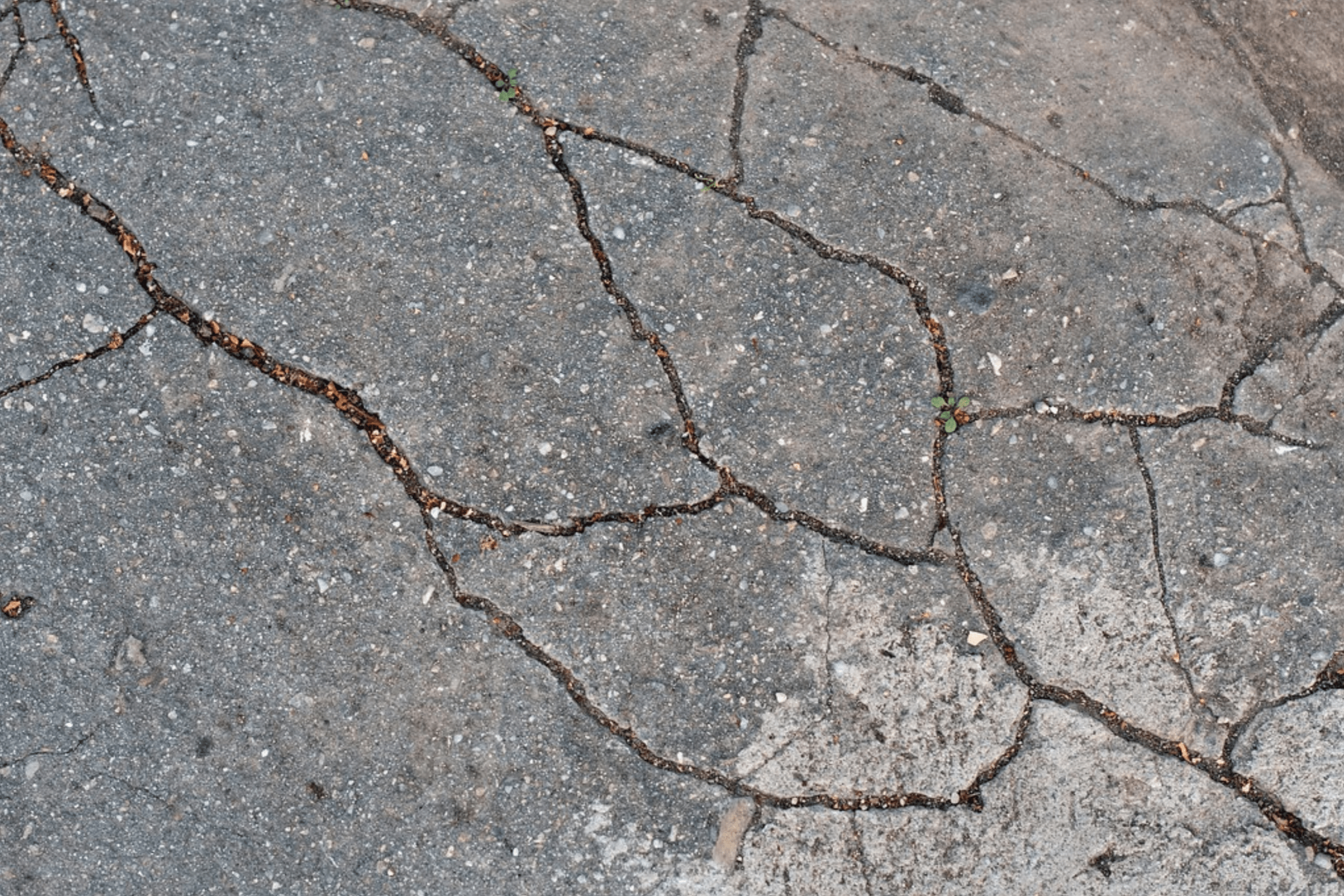
Block cracks appear as randomly arranged linear cracks, often several feet apart. They develop when an asphalt lot does not get much traffic, and the surface shrinks horizontally as the asphalt ages. They will result in water penetration and other asphalt problems if not filled.
7. Rutting
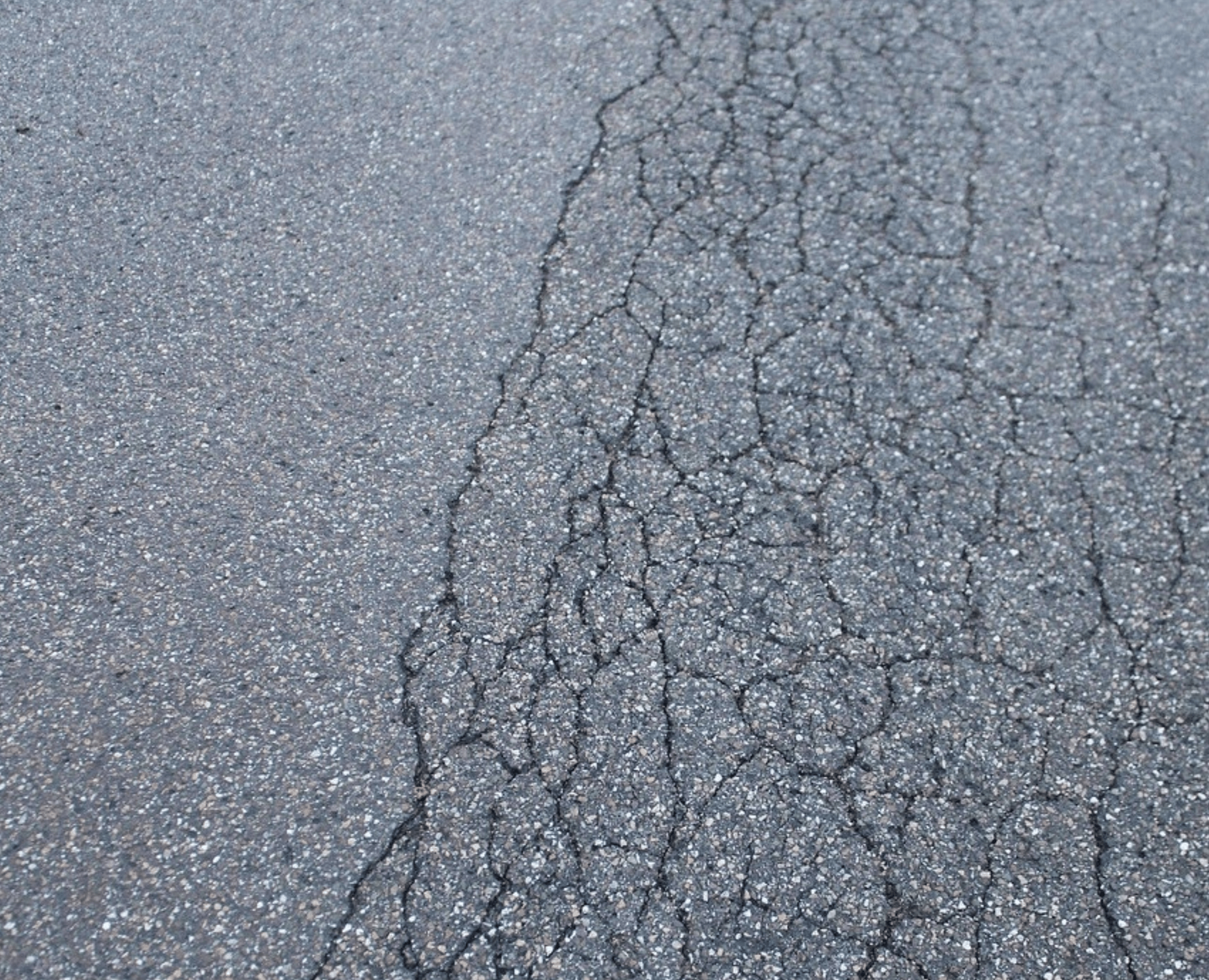
Rutting or ruts are caused by vehicle traffic. They appear as depressions in the shape and direction of commonly driven areas, usually the same size and shape as vehicle tracks. They develop if the asphalt does not have the capacity to bear the loads that are being carried on it.
8. Raveling
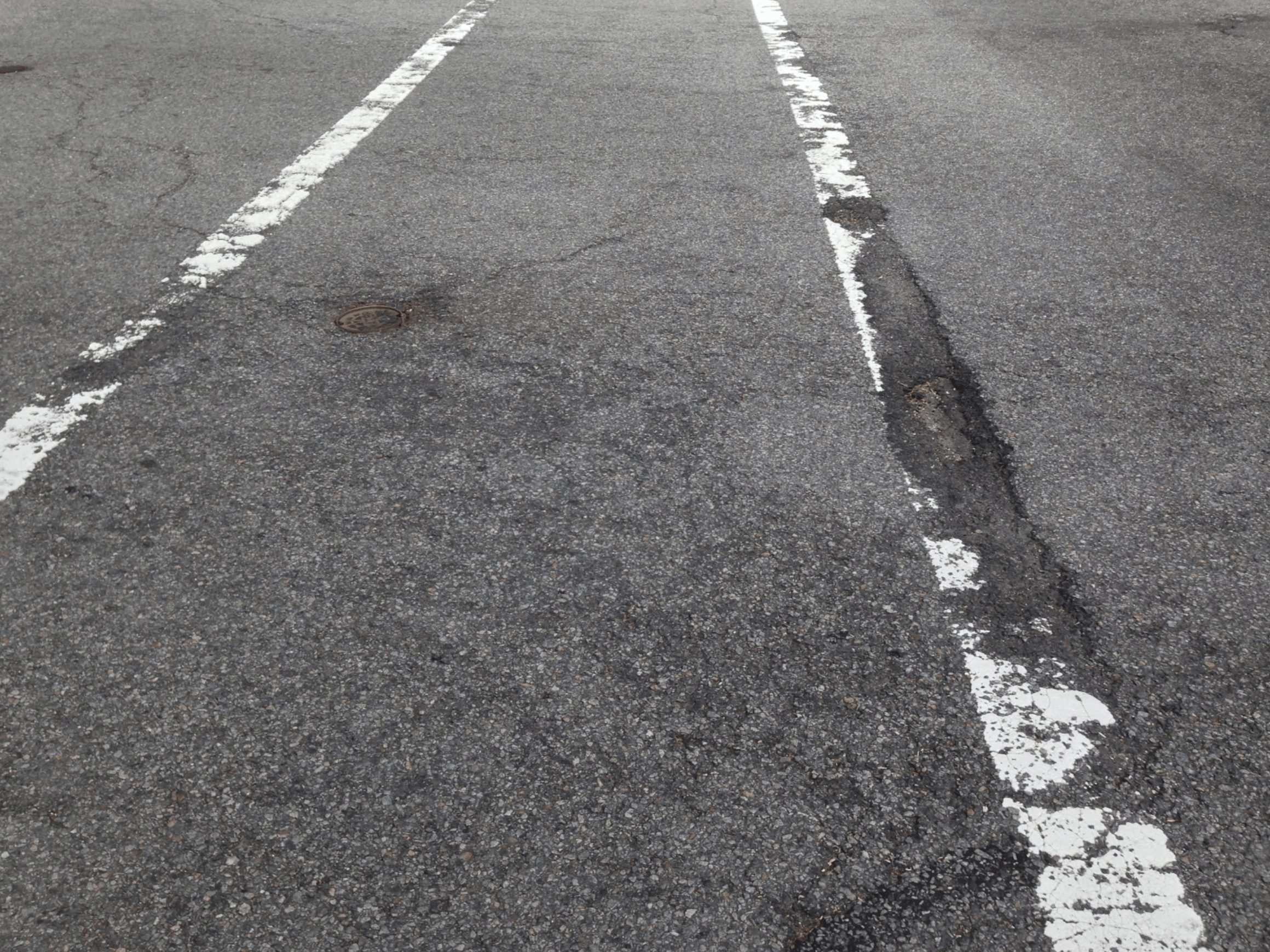
Raveling is asphalt damage that occurs when the gravel in the asphalt loosens and spreads. This will happen over time if the surface of the asphalt has oxidized. Raveling weakens the surface of the asphalt and will lead to greater issues if not treated.
9. Shoving
Shoving appears on the surface of asphalt as bumps or raised areas. It’s usually found where heavy vehicle loads regularly start and stop, causing inordinate asphalt distress in these areas.
10. Upheaval
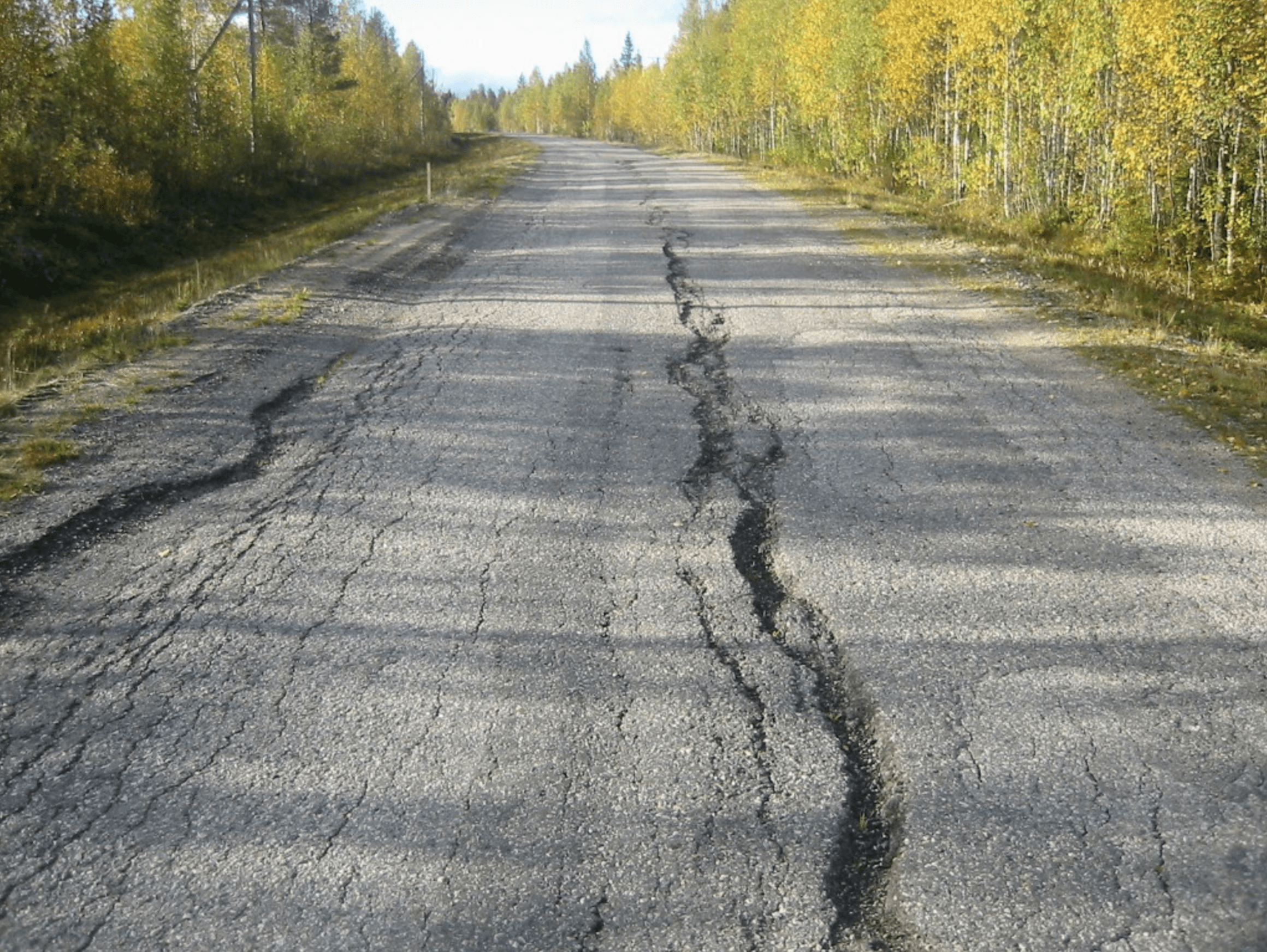
Upheaval appears as a raised, often broken-open area of asphalt and is caused by an underlying swelling of the subsurface, which can be caused by frost or expanding soils.
11. Peeling
Peeling occurs when the surface layer of the asphalt dries out over many years and begins to peel away, revealing the sub-layer of asphalt that had been previously laid.
12. Root Cracks
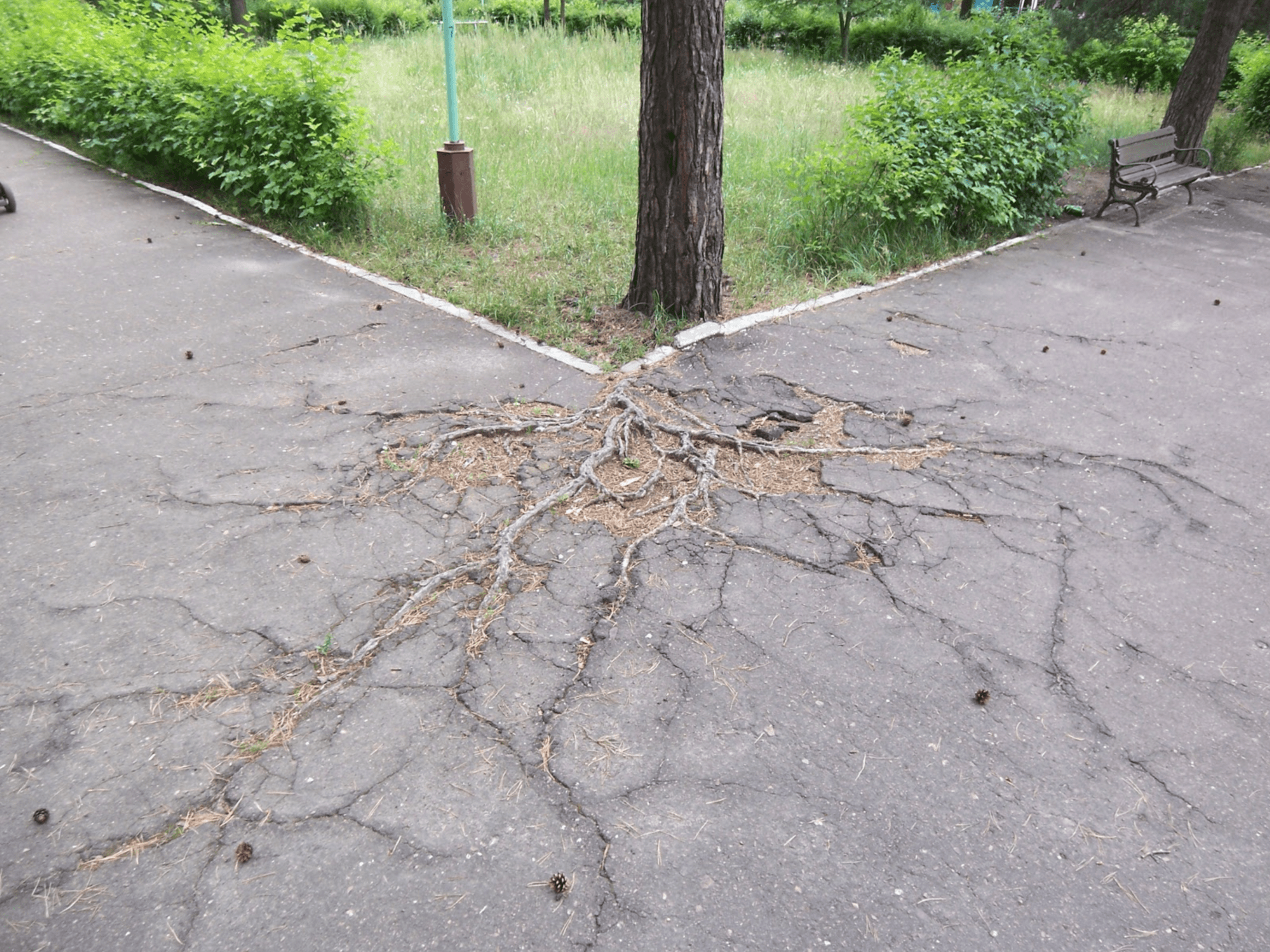
Root cracks are caused by tree roots growing underneath a paved asphalt surface. They appear as winding, raised linear bumps and can eventually open up to become larger cracks.
13. Linear Cracks
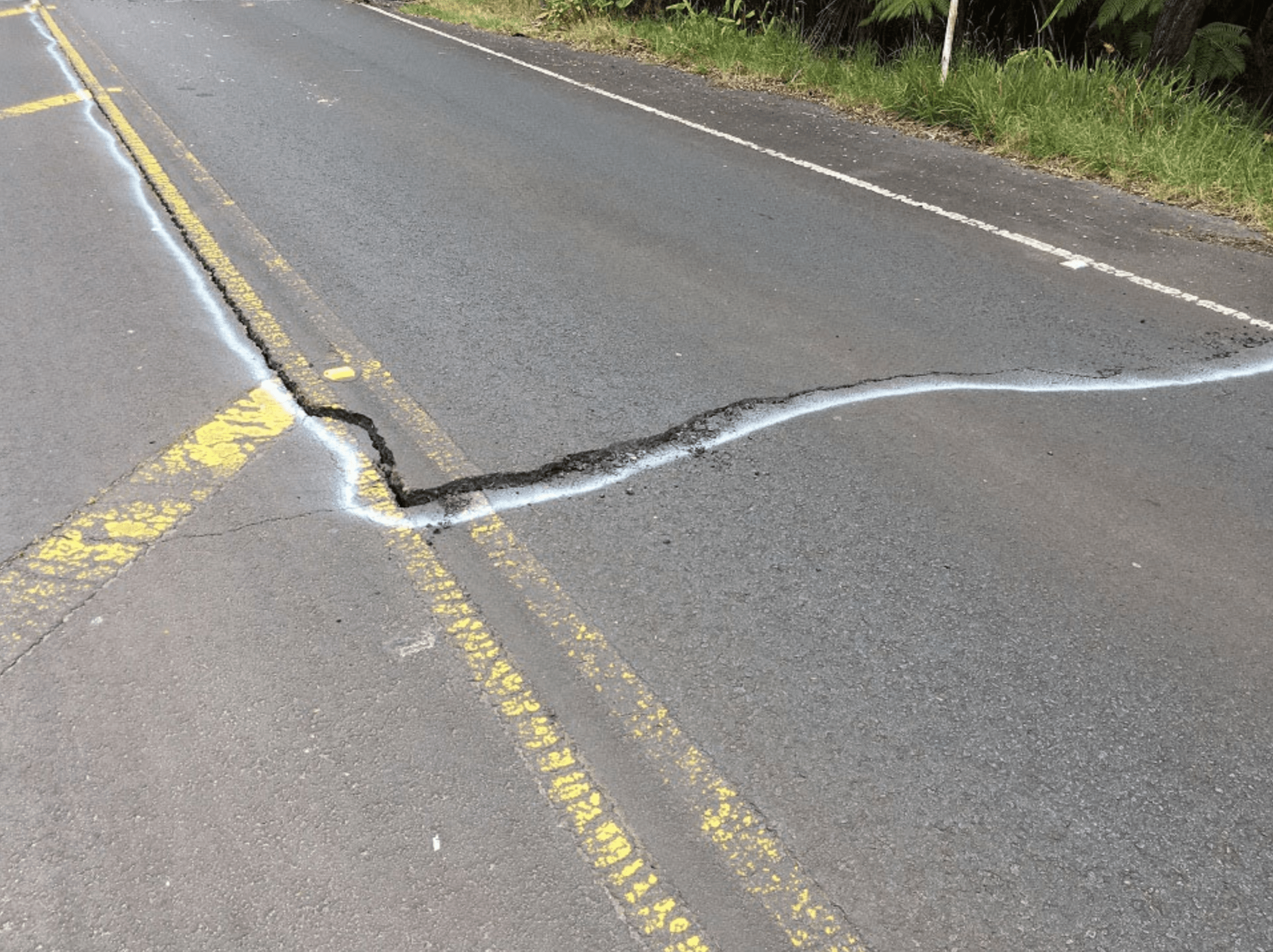
Linear cracks are long cracks that develop primarily when water is able to penetrate the surface of the asphalt pavement. They are very likely to develop into open holes and require immediate attention.
A Low-Maintenance Alternative to Asphalt
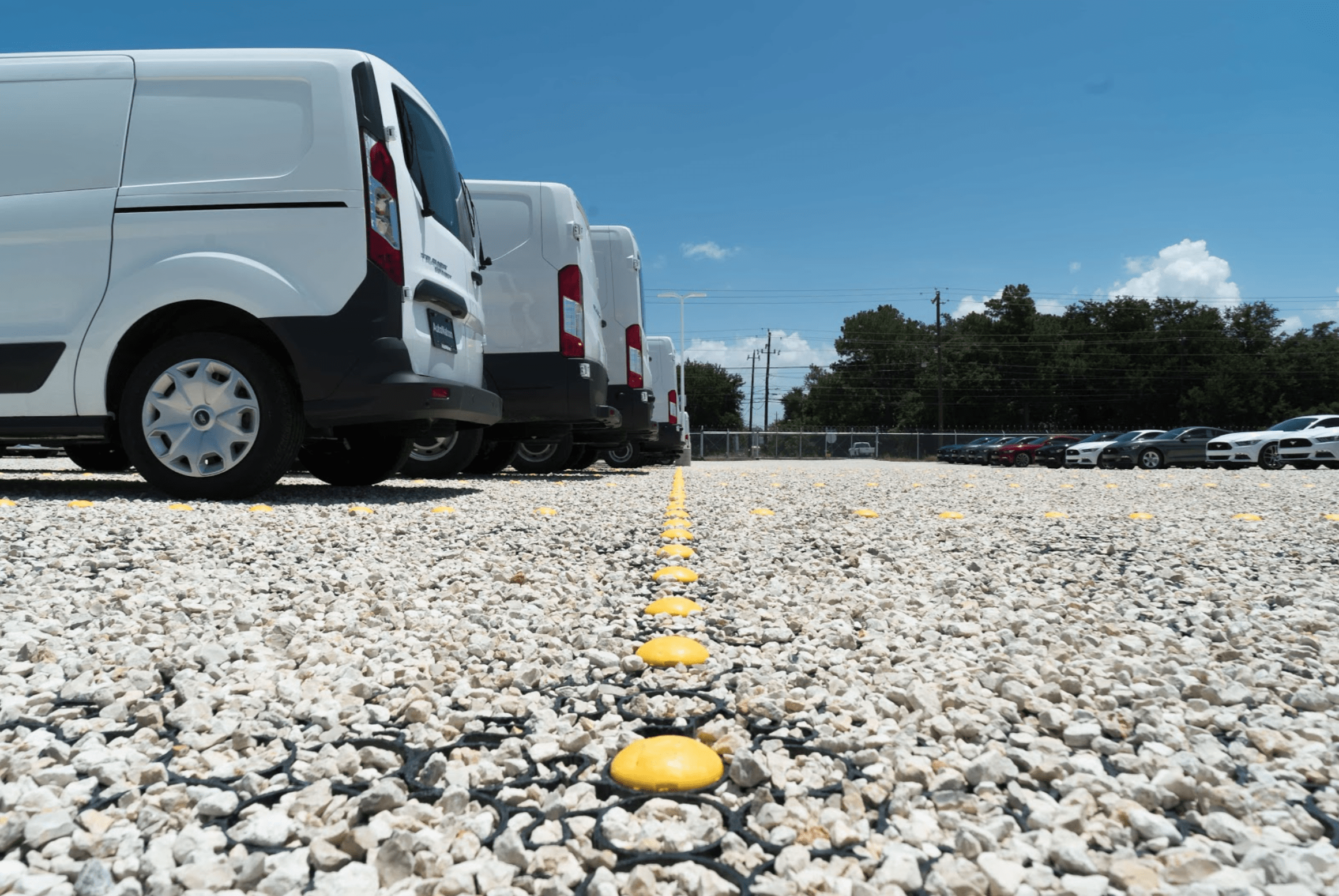
If you want to avoid having to figure out how to fix a depression in an asphalt driveway ordeal with edge cracking or cracked pavement, you need a better alternative to asphalt —TRUEGRID permeable pavement is pavement made from 100% recycled plastic.
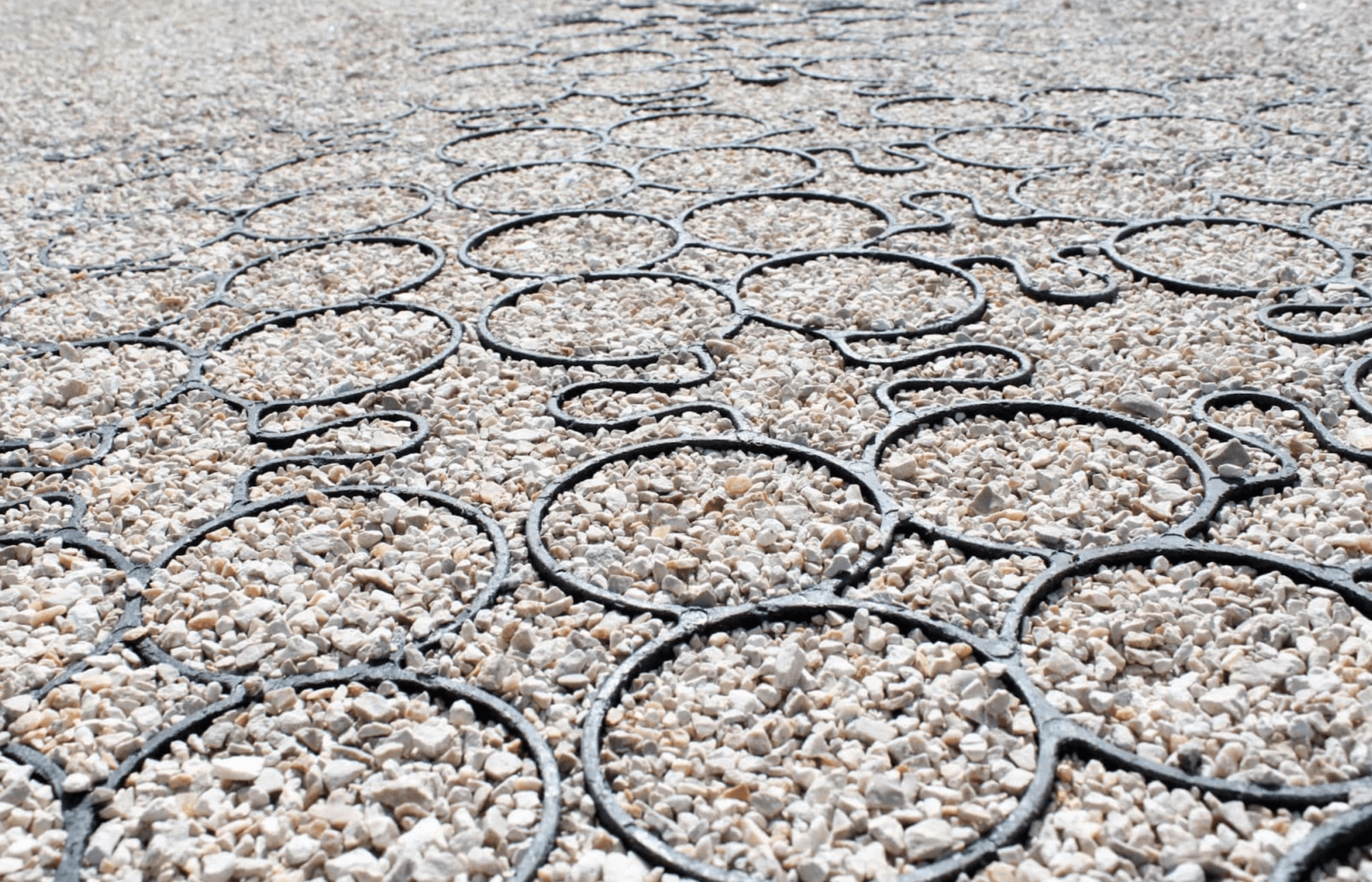
It’s much more durable than asphalt and requires almost no maintenance throughout its 60 year lifetime. A permeable pavement driveway or parking lot from TRUEGRID can last for decades and is competitive in price to purchase and install than commercial asphalt. It’s also eco-friendly and provides a built-in drainage solution, with a greater surface area, eliminating the need for an additional drainage system.
For a paving solution that’s cost-effective, durable, fast to install, eco-friendly, and stylish as well, TRUEGRID permeable plastic pavement is likely to be your best choice.
Contact TRUEGRID today for information on your project needs and custom samples.



